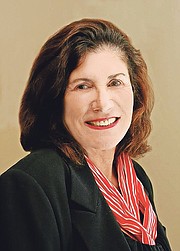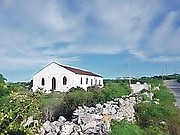By DIANE PHILLIPS
There are three things Anita Collie Pratt will never forget when she thinks of Hurricane Joaquin – the howling of the wind, the sound of the sea as it roared closer and closer until it crashed through her door and when it was all over, the kindness of strangers.
For most of us in The Bahamas, Hurricane Joaquin is a fading memory. We hardly remember the date (September 28, 2015) or how hard the winds blew (155) or what category it was (4).
We assume those who suffered must have recovered by now.
We assume wrongly.
For Mrs. Collie Pratt, Deputy Chief Councillor of Acklins and Acting Councillor when the storm slammed into the island, Joaquin is not so much a memory as the single event that wrote the first chapter of the rest of her life.
First, a little about life before Joaquin. Located in the southern Bahamas, Acklins is 91 miles long and at its narrowest point, only a mile wide. It is known for the range of hills that runs 70 miles and gave the isle its original Indian name, Yabake, meaning long hilly island. Mrs. Collie Pratt loved Acklins with the kind of passion that causes her voice to rise and eyes to widen just talking about it.
“I would walk the beach in the evening, sometimes an hour or two and see no one else, just the seagulls and the waves, occasionally the flamingoes,” she said. During those long evening walks, the door to her home 300 feet from shore remained unlocked. People who lived in Acklins shared her pride in the island’s peace and tranquility.
“The eve of the storm it was raining a lot,” she recalled. “It was windy. They closed the school early because of all the rain. I called the administrator, he said it was a little squally. He checked with the Met Office.” There was no cause for alarm, they were assured.
Close to midnight, she heard the wind picking up strength. A friend called, she declined the offer to accompany her to a house on higher ground. By 2am, the banging and clattering started. The wind had gained strength and was slamming outdoor furniture against the house. She rushed out and brought in her dog, Sugar. By 5am, still with power and internet, she went online and asked anyone who might have been on if they knew what was happening.
It was then she heard “A hurricane is coming at you.” She phoned ZNS. The newsroom updated her.
“Everyone was frantic. The rain was coming. The wind was howling. We still had phones then and everyone was calling each other, checking on everyone.” The island administrator said he would send someone to get her. Someone did try, but the water was rising so fast they had to turn back. Hour after hour passed. Conditions deteriorated. Flood waters grew higher. Though daytime, the sky darkened. It could have been night. Police tried to rescue her, but they, too, had to turn back.
“In two hours, the water was four feet high in my yard. Pressure was so great I couldn’t open the door.” The last advice she got was to somehow get into the manhole in the yard and stay below.
“I started to cry. I was walking, holding Sugar, trying to make peace with God, crying and praying.” Then she heard voices.
“I put my hand on the door and I could hear someone calling my name.”
Five men from the community had come to rescue her, lifting her above the flooded yard that had been home and her little store forever.
For the next three days, she huddled with 15 other families inside a house. When the storm that hovered day and night finally passed, the light revealed devastation everywhere. From Masons Bay to Lovely Bay to Chesters and Pinefield, almost nothing was recognizable. Roofs were blown off, buildings collapsed, glass shattered, windows blown out, vehicles and trees uprooted and wrapped around one another. Clothes, shoes, grocery supplies, memories strewn.
Driven by adrenaline and fuelled by courage, Mrs. Collie Pratt and the island administrator worked for 11 days straight, trying to clean up.
Nearly 300 miles away, the phone rang in the home of a woman known for her golden heart and hands-on approach to solving problems. Betsy Dingman picked up the receiver. It was a national leader. “Did you see the devastation of the southern islands?” he asked.
“Heartbreaking, those poor people,” she replied. “It looks like they lost everything. They had no shelter, for those who remained on the islands, almost no safe place to stay.” She did not wait for him to pose the next question, would she help? She told him she was already trying to figure out how.
An NGO was formed. Restoration Bahamas went to work. Mrs. Dingman and a group of women, mostly from Lyford Cay, rolled up their sleeves, enlisted the boundless energy and talent of one man named Kenny Cargill and flew into action. They lost count of the number of plane trips they made, carrying hope and building supplies.
The decision was made to rebuild St. Mark’s Baptist Church in Hard Hill, a stone building that had miraculously managed in part to survive the storm but needed far more than a little tender loving care.
Reconstruction took three years.
“The hardest part was finding people on the island who could do the work because there was no place to live,” said Mrs. Dingman.
But they were determined to tackle the challenge because of the need for a safe haven, a building that would act as a true hurricane shelter the next time a storm threatened the peaceful island where people still do not lock their doors. And St. Mark’s had great historic value. It deserved to be the community centre where those who would return to Acklins one day would celebrate marriages, bury their dead, christen their young.
“How 200 years ago they knew where to place the building just amazed us,” said Mrs. Dingman. Working with Cargill, Restoration Bahamas also engaged the services of a well-known architect who specializes in historic reconstruction.
Three years, three months and the 200-year-old St. Mark’s Baptist Church project is finally done except for the clean-up of materials and rebuilding the rubble wall.
There has not been an official opening nor a ribbon-cutting but there is a bond that does not need ceremony to mark its presence. It unites Mrs. Collie Pratt, Mrs. Dingman, Kenny Cargill and all the women who trekked back and forth to a place where their labour and talent will keep locals and visitors safe the next time. You don’t need a marching band to sing their praises.
“It was a blessing, there was a door that opened unexpectedly. The storm swept everything out, but it blew Mrs. Dingman and Kenny and these people our way just as we were walking around hopelessly. We will always be grateful for what they have done for the people of Acklins.”






Comments
DDK 5 years, 2 months ago
Heart-warming story. Thank you!
Sign in to comment
Or login with:
OpenID